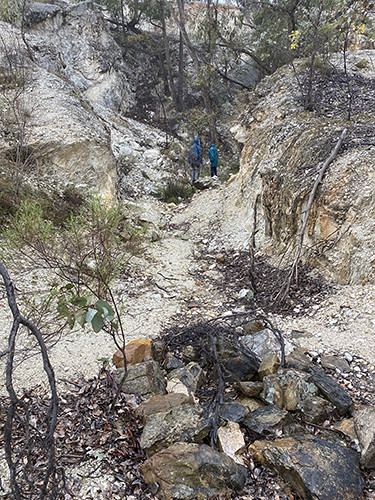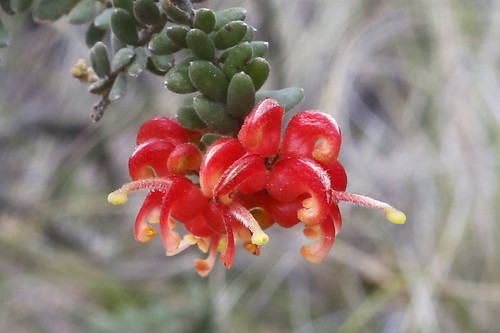The flower below is St John’s Wort [Hypericum perforatum], a pretty plant which has been used for over a thousand years as a herbal remedy. Flowers are sparse, but seeds many at this time of the year on Mount Alexander. [For a picture of the plant in full flower, see the weeds section of our picture gallery].
St John’s Wort was introduced to Australia as an ornamental plant and for medicinal reasons in the 19th century, and is a perfect example of a plant which is virtuous in its native situation and a raging menace when exported: when it becomes dominant it radically alters the vegetation community and destroys important habitat. It currently infests over 200,000 hectares of land in Victoria and NSW, particularly open woodland. It is a noxious weed: if ingested by stock at the wrong time of the year it can weaken the animals and even result in death. About 80% of the infested area is in native woodlands.
A single St John’s Wort plant can produce 30,000 seeds annually, and these can last in the soil for 12 years—so it’s obvious that control is difficult. Even fire, if not used correctly, can increase infestations. The only serious possibility of control is by biological means, and a mite [Aculus hyperici] was released on the Mount some 20 years ago, with initially very encouraging results. It seems however that this weed, like many others, is having a boom year.














 Click on image for info/order page
Click on image for info/order page Click on image for info/order page
Click on image for info/order page Click on image for info/order page
Click on image for info/order page




















